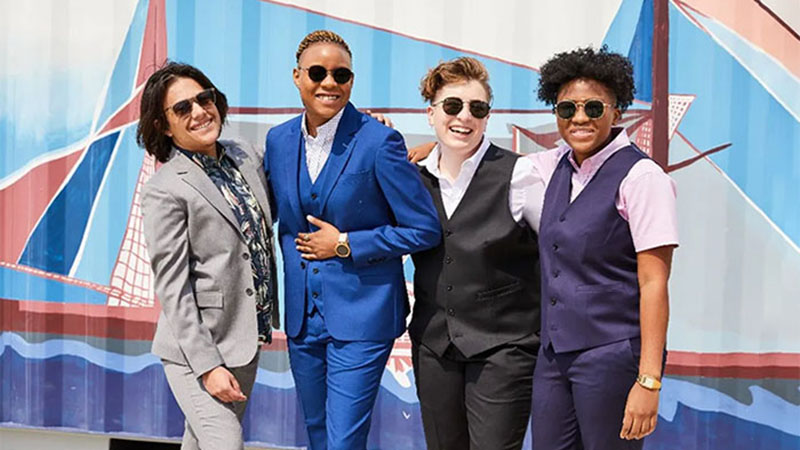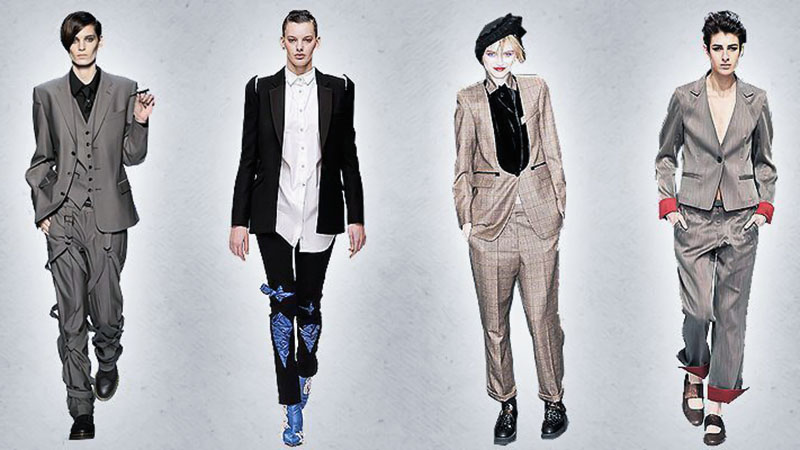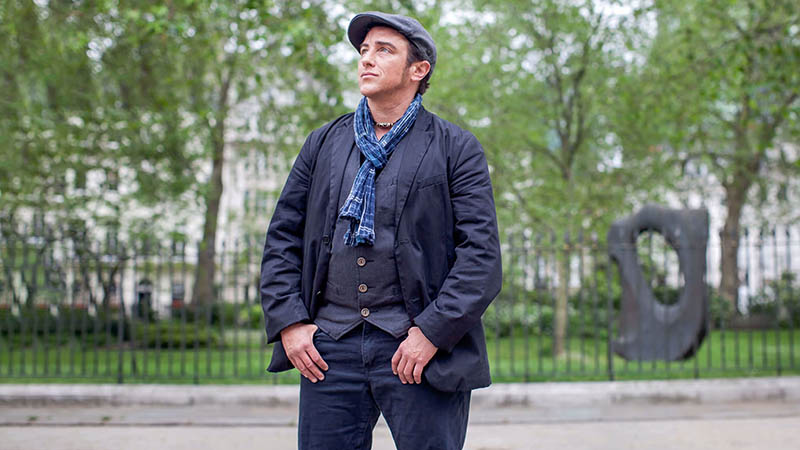The Role of Fashion in FTM Transitioning

Fashion in everyday life plays an important role in constructing identity, especially for those of you transitioning from female to male. Clothing as voice aids in creating your identity and this is the central part of existence because people want what is on the outside to reflect the inside. Fashion is indispensable for such a change because self-change is a very off and very complicated process, and fashion helps with self-esteem, and rejection, and helps to restore order in your life when everything is upside down.
In this article, you will find a comprehensive discussion on the place that fashion occupies in the process.
Main Aspects of Fashion as Expression
Fashion also provides you with the ability to dress to the shape of your body in order to improve the fashion sense around you and have individuals address you according to the gender identity you express. Fashion as expression includes:
● Personal Identity and Self-Perception

Pertaining to the features of a necessary element, fashion appears as a tool that may help to state your personality. Hence, it is crucial to select the right garments as an FTM person as it gives you the feeling of a man in comfortable clothing while people treat you likewise.
Remember, fashion plays a part in how people see themselves. Taking a mirror image of wearing the preferred gender clothing increases the positive perception of the self and enhances the gender identity.
● Confidence Boost and Mood Enhancement
The improvement in dressing code enhances confidence since you feel that you are well-dressed. This is perhaps important when you are in the period of transition, say when you are experiencing an issue of self-esteem and do not know how to come out to your circle.

Also, fashion relates to people’s emotions and feelings. Looking good and dressing appropriately can give people a proper attitude towards life, leading to increased daily happiness. Also, selecting your fashion frees you from being chained to authoritative dress codes.
● Cultural Affiliation and Social Interaction
Fashion allows individuals of a given culture or subculture to associate with a given class. In this case, since you are an FTM individual it is important to emulate fashions that are commonly associated with male subcultures.

Just keep in mind that you are dressing to be fashionable, yet you are able to do that while being as unique as you can be.
Besides, your clothing affects how others respond to and address you, whether in public or private. Therefore, as an FTM individual, you should strive to dress so that people will address you according to your preference.
Clothing Choices Pre-Transition
Before transitioning, you should choose clothing that suits your unique features, personalities, and preferences, as not all men’s clothes will fit you well. Here are some of the clothing choices pre-transitions:
● Androgynous Styles

You may choose the androgynous style in your pre-transitioning stage since the style is unisex and does not have a specific gender.
For instance, you can choose skinny jeans or well-fitted dress pants.
Also, wear a cardigan over a t-shirt paired with skinny jeans and canvas sneakers for an androgynous look.
● Loose-Fitting Clothes

The right clothing choice enables individuals to address you by the correct gender and pronoun, thereby affirming your gender identity.
Baggy clothes and blouses that are too large also cover likely areas of discomfort, such as the chest or hips.
Layering can also add contour by giving the wearer a more masculine look and increasing comfort where curves are involved.
Pre-Transition Fashion FTM Experiences
Several FTM people have opened up on how they used to dress before their transition, with specific apparel giving them the feeling they are real men.
For instance, Keith Reynolds, 18, a student in Surrey, feels that wearing baggy jeans and hoodies worked for him in dealing with gender dysphoria during his teenage years.

Surat-Shaan Knan, 40s, project manager for Liberal Judaism, London, also disclosed how he always preferred shirts with a neutral color that were not too tight on his chest since they do not make him too self-conscious.
J Fernandez, 23, an administrative assistant in London, said that once in his teenage years, he felt comfortable wearing his brother’s clothes. However, he could not express his gender issues.
These are samples of stories that show how the choice of clothes has effects on dysphoria and the display of the gender they always wanted aside from the transition period.
Transitioning entails various stages that ensure you live according to your gender identity. Therefore, knowing how to navigate men’s fashion is essential to determine the one that fits you perfectly.
Navigating men’s fashion may include:

● Understanding Fit
Unique phenomena have to be fitted correctly in menswear. Some of them include slim fit clothes, regular fit clothes, and relaxed fit clothes; these terms assist FTM persons to know and select their ideal style of dressing.
● Accessorizing
Avoid using accessories for women, such as dangle earrings or thin chains. That way, accessories such as watches, hats, and belts can sum up an outfit and make it more personal. They also assist in matters of emphasizing masculinity.
● Building a Wardrobe
To build a practical wardrobe, consider analyzing your body type, accepting and embracing yourself, and learning the styles that make you feel comfortable.
Factors like measures that accompany appropriate matching shoes and belts, matching of the clothes, pressed appearances, and correct fabrics enhance your appearance and ultimately increase confidence levels.
Different Styles and Their Meanings
As an FTM individual, you should understand that while navigating men’s fashion, different styles have different meanings.
Here are the different styles you need to know:

- Casual
The everyday attire also covers informal clothing like jeans, T-shirts, and sneakers, which leaves the impression of the easy-going person.
- Business Casual
As an FTM individual, you can wear professional and less formal clothing, including dress shirts and chinos, because of their comfort.
- Formal
Clothes for formal occasions, such as suits and formal shoes, depict class and are rather invigorating for events that demand the best out of you. Also, you can wear such clothes to work since they are appropriate for a work environment.
- Sporty
Wearables showing body concerns, such as all-in-one packing boxers, a sports chest binder, a compression sportster, a t-shirt and a short, are crucial if you are an individual who is more into activewear and athleisure. Also, choose sportswear that makes you feel comfortable.
Finding Your Style During Transition
As an FTM individual, you should choose the appropriate style that matches your body type and personality to bring out your best while transitioning.
Some ways you can develop your style include:
● Experimenting with different styles during transition

Experimentation can help determine the appropriate style you can practice to feel comfortable. Trying different outfits, colors, and brands may be entertaining and informative.
Thrift stores provide opportunities for changing the styles and experimenting with the looks for cheap prices.
You can visit the thrift shops with your stylist or someone with experience so that they may guide you on what would work best for you.
Sometimes, it helps to search for ideas in blogs, social media, or celebrity outfits to get familiar with what is new.
● Testimonies of People and Their Fashionable Style
In today’s society, people have told emotional and inspiring narratives about changes in their choices in clothing when they transition.
For example, J mentioned that he felt trapped in androgynous outfits when he started the program.

Still, he gained more confidence and became excited to wear fitted jeans, button-down shirts, and other items that are stereotypically considered for men.
Another is the case of Surat-Shaan Knan, who noted that he began changing bits of his dress by wearing hats and scarves before he could fully establish himself in the multiple male fashions. He also stated that online resources on FTM fashion enabled him to get the latest and trending fashion.
Fashion post-transition
After transitioning, you may change your sense of fashion choice for various reasons, including personal and social.
● Evolving Fashion Choices

Since your body image matches your gender after transitioning, you can try out various styles and fashions without as much prohibition.
Freedom and the acceptance of the individual are essential since they enable you to incorporate the desired style that characterizes this stage.
Comfort is another important thing when choosing what to wear, so you may choose clothes that are personal to your lifestyle after transitioning.
● Inspiring Stories of Individuals Post-Transition
There are many success stories of people who more than willingly accepted their style after transitioning. These stories include:
Josie Nixon from Denver described how it was a significant difference when he eventually found a tailor who would measure him specifically for trousers for formal wear that would help him feel powerful and whole.

Tim McCoy, Syracuse N.Y., mentioned that he likes to wear comfortable, trendy, but not overly formal clothing since he is not a formal person, and such dressing makes him feel more comfortable within himself whenever he is out.
Conclusion

Fashion is unique in the FTM transition process, as it helps you embrace yourself and focus on your future identity.
Pre-transition clothing choices are often associated with comfort and individual identity, and the path towards determining an appealing style in men’s fashion, both during and after the transition, are highly personal and life-changing experiences.
Successful garments improve your quality of life and conquer dysphoria because fashion protects you and is a way of self-expression.

 Basic Packers
Basic Packers Pack & Play
Pack & Play STP
STP

